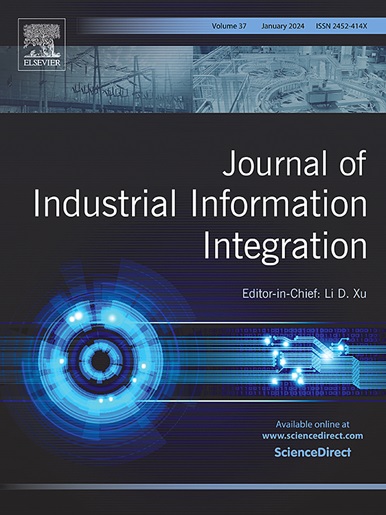Machine learning assisted prediction of the nitric oxide (NO) solubility in various deep eutectic solvents
IF 10.4
1区 计算机科学
Q1 COMPUTER SCIENCE, INTERDISCIPLINARY APPLICATIONS
引用次数: 0
Abstract
Deep eutectic solvents (DESs) are recently proposed as green materials to remove nitric oxide (NO) from released streams into the atmosphere. The mathematical aspect of this process attracted less attention than it deserved. A straightforward approach in this field will help engineer DES chemistry and optimize the equilibrium conditions to maximize the amount of removed NO. This study covers this gap by constructing a reliable artificial neural network (ANN) to correlate the NO removal capacity of DES with equilibrium pressure/temperature and solvent chemistry. So, firstly, the physical meaningful features are selected to make the DES chemistry quantitative. It was found that the density is the best representative for the hydrogen-bound acceptor and hydrogen-bound donor. Also, the density and viscosity of the DESs exhibit the highest correlation with the NO solubility. Then, the hyperparameters of three famous ANN types (feedforward, recurrent, and cascade) are determined by combining trial-and-error and sensitivity analyzes. Finally, the ranking test distinguishes the ANN type with the lowest uncertainty toward estimating NO dissolution in DESs. The cascade neural network (CNN) with twelve and one neurons in the hidden and output layers equipped with the tangent hyperbolic and radial basis transfer functions is identified as the best ANN type for the given purpose. This model predicts 292 DES-NO equilibrium records collected from the literature with mean absolute errors = 0.033, relative absolute errors = 1.49 %, mean squared errors = 0.002, and coefficient of determination = 0.9998. Also, the present study helps understand the role of DES chemistry and operating conditions on the amount of removable NO by DESs. 1,3-dimethylthioureaP4444Cl (3:1) is recognized as the best DES to separate NO molecules from gaseous streams, respectively. The simulation results show that the unit mass of the best DES is capable of absorbing up to ∼27 mol of NO.
机器学习辅助预测一氧化氮(NO)在各种深共晶溶剂中的溶解度
深共晶溶剂(DESs)最近被提出作为一种绿色材料来去除排放到大气中的一氧化氮(NO)。这一过程的数学方面没有得到应有的重视。该领域的直接方法将有助于设计DES化学并优化平衡条件,以最大限度地去除NO。本研究通过构建一个可靠的人工神经网络(ANN)来将DES的NO去除能力与平衡压力/温度和溶剂化学联系起来,从而弥补了这一空白。因此,首先选取有物理意义的特征,使DES化学定量化。结果表明,密度是氢结合受体和氢结合给体的最佳代表。此外,DESs的密度和粘度与NO溶解度的相关性最高。然后,结合试错和灵敏度分析,确定了三种著名的人工神经网络类型(前馈、循环和级联)的超参数。最后,通过排序检验区分出不确定度最低的ANN类型来估计DESs中NO的溶解。在隐层和输出层分别有12个和1个神经元的级联神经网络(CNN)分别具有正切双曲基和径向基传递函数,被认为是给定目的下最好的神经网络类型。该模型预测了292条DES-NO平衡记录,平均绝对误差= 0.033,相对绝对误差= 1.49%,均方误差= 0.002,决定系数= 0.9998。此外,本研究有助于了解DES化学性质和操作条件对DES可去除NO量的作用。1,3-二甲基硫脲ap4444cl(3:1)分别被认为是分离气态NO分子的最佳DES。模拟结果表明,最佳DES的单位质量能吸收高达~ 27 mol的NO。
本文章由计算机程序翻译,如有差异,请以英文原文为准。
求助全文
约1分钟内获得全文
求助全文
来源期刊

Journal of Industrial Information Integration
Decision Sciences-Information Systems and Management
CiteScore
22.30
自引率
13.40%
发文量
100
期刊介绍:
The Journal of Industrial Information Integration focuses on the industry's transition towards industrial integration and informatization, covering not only hardware and software but also information integration. It serves as a platform for promoting advances in industrial information integration, addressing challenges, issues, and solutions in an interdisciplinary forum for researchers, practitioners, and policy makers.
The Journal of Industrial Information Integration welcomes papers on foundational, technical, and practical aspects of industrial information integration, emphasizing the complex and cross-disciplinary topics that arise in industrial integration. Techniques from mathematical science, computer science, computer engineering, electrical and electronic engineering, manufacturing engineering, and engineering management are crucial in this context.
 求助内容:
求助内容: 应助结果提醒方式:
应助结果提醒方式:


